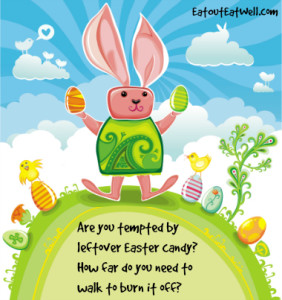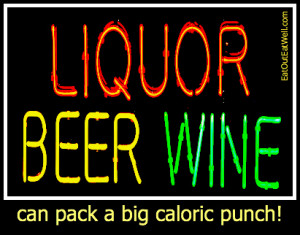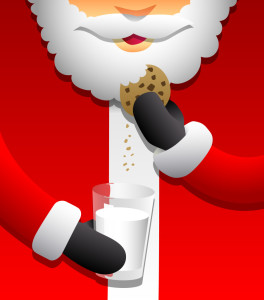 Is the candy in your kid’s Easter basket calling your name? What about all of the candy in the snack room that your co-workers brought into work because they don’t want it hanging around their houses?
Is the candy in your kid’s Easter basket calling your name? What about all of the candy in the snack room that your co-workers brought into work because they don’t want it hanging around their houses?
Here’s another way to look at it:
If You Want To Walk Off Your Easter Candy
Walking is great for many reasons. Just know that it takes a herculean effort to walk off lots of calories. For instance:
If this is the candy in your Easter basket — and you eat it all:
- 25 small jellybeans
- 5 Peeps
- 8 malted milk robins eggs
- 1 ounce chocolate bunny
- 1 Cadbury Creme Egg
- 4 Lindt Chocolate Carrots
that adds up to 990 calories. You will need to walk 9.9 miles, 15.96 kilometers, or 19,800 steps, assuming you cover one mile in 2,000 steps.
If this is in your basket:
- 25 small jellybeans
- 5 Peeps
- 5 marshmallow chicks
- 8 malted milk robins eggs
- 1 large 7 ounce chocolate bunny
- 1 chocolate-covered marshmallow bunny
- 1 Cadbury Creme Egg
- 1 Cadbury Caramel Egg
that comes to 2076 calories. You will need to walk 20.76 miles, 33.48 kilometers, or 41,520 steps, assuming you cover one mile in 2,000 steps.
If you’re going “light” and only eat:
- 25 small jelly beans
- 5 Peeps
- 1 medium (1 3/4 ounce) hollow chocolate bunny
- 1 Cadbury Creme Egg
you would rack up 730 calories and you will need to walk 7.3 miles, 11.77 kilometers, or 14,600 steps — assuming you cover one mile in 2,000 steps — to walk off that number of calories. Sounds like a lot, but it’s very doable over a few days.



